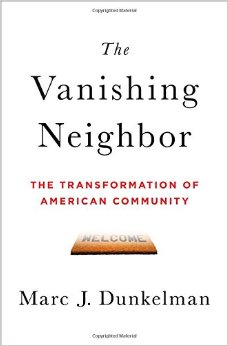Setting the Stage to Launch Lean Urbanism
/
The following is an abstract of a potential longer written piece which is meant to explore how Lean Urbanism can be achieved, starting with setting the right foundations. Through this paper I intend to reflect on the “making small possible” tenets of Lean Urbanism to reenlist the “missing middle” through less expensive construction costs, affordable rents, while also offering superior profits for developers, and tax revenues to municipalities.
More importantly, by enabling return of the “missing middle,” the current trend of enfeebling innovation will be arrested. Innovation, arising solely out of the middle income, will return commercialized innovation, in other words, jobs.
architectural example supporting lean urbanism
Mounting regulations from governing agencies, from lending institutions, from angry abutter
stipulations, from recalcitrant property owners, from fire and safety precautions, etc., make the
cost of everything, but especially building construction, skyrocket. Naturally, rising costs escalate revenue (rents) too. Today, rents, and costs of living generally, have escalated to the point where only the wealthy and the poor, the poor who qualify for subsidies, can afford them. Middle-income citizens, without wealth or qualification, have become outcasts, the Indian “Dalit” of American society. The pervasive phenomenon has come to be labeled the “missing middle.” Much ink has been spilled searching to re-balance the national pandemic, including debating means for changing, or avoiding, regulations, and for heroic measures to enable youth and immigrants to become small development/building enterprises, “making small possible.” While smart codes and “making small possible“ efforts receive enthusiastic support and outstanding attendance at Small Developer Roundtables, not many small development projects, or development entities, yet emerge. The reason for little emergence is due to lack of fertile stages from which small development can launch. Existing conditions are too problematic for inexperienced and under-capitalized neophytes to find sound footing. Therefore, effort must first be made to create environments that enable and foster small-scale development by small-scale developer/builders. The paper will show why master plans and regulations must allow no minimum lot size, no setbacks, no on-site parking, and no maximum size for building, number of dwelling units, and height.
Existing intransigent condition
The paper will explain why environments that support “making
small possible” will attract small developer/builders, allow
simpler construction at lower costs, fostering lower rents, and
making values soar.
The paper will lay out incremental methods that release early
prototypical projects that realize whole neighborhoods to effectively
demonstrate the abundance within the grasp of the once largest segment of American population, and shine a spotlight to open flood gates to other small developer/builders, to other municipalities, and to other finance entities, to invite back the “missing middle,” to the benefit, the industry, the growth and the prosperity of the
entire nation.
Exemplifying the paper’s theme, below are images to demonstrate setting a stage by repurposing a 100 acre languishing site to maintain existing infrastructure for affordability, to make small blocks, to re-plat large lots into small affordable lots, and to locate centers to anchor and stimulate walkable small neighborhoods that support “making small possible,” and support the paper’s thesis for setting a fertile stage for small, affordable and value adding development.
Proposed Condition to launch lean urbanism










